
views
- Schedule an appointment with your doctor to get measured. If you're 17 weeks into your pregnancy, empty your bladder before you go.
- Follow up with your doctor if you have unusual measurements. Twins/triplets, uterine fibroids, or a breached baby could cause this.
- Or, measure yourself from home. Take some measuring tape and find the distance from your fundus to your pubic bone.
Having a Doctor Measure Your Fundal Height

Make an appointment with your doctor or healthcare practitioner. Though measuring your fundal height doesn't take long, it does typically require an office visit. Being at the doctor's office also gives you the added benefit of being able to immediately discuss the results of your fundal height test with your doctor, should anything out of the ordinary be found.

Empty your bladder before measuring. Depending on how far along you are in your pregnancy, your doctor may ask you to empty your bladder. The reason for this is that starting at around the 17-week mark, a full bladder can cause the fundal height measurement to off by a matter of centimeters.
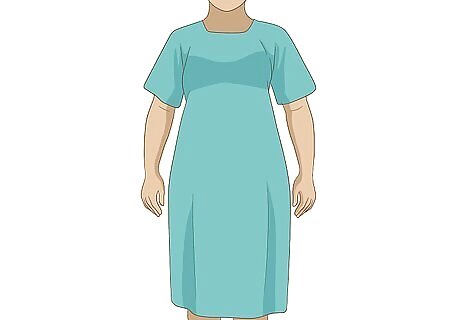
Change into a hospital gown. Fundal height measurements are fairly precise - a discrepancy of only a centimeter or two can make the difference between a "normal" measurement and an "abnormal one". Clothes, belts, and so on can cause small differences in your fundal height, so they are typically removed before measuring. Changing into a hospital gown minimizes the possibility of an inaccurate result and additionally offers your doctor the ability to easily access all areas needed for a good fundal height measurement.
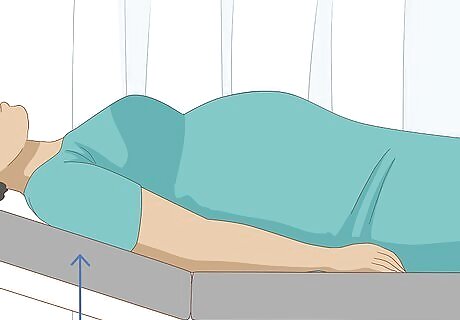
Lay on the examination table. Your doctor will ask you to lay in a semi-recumbent position (this is simply laying on your back with your head slightly elevated). The semi-recumbent position makes it easy for the doctor to feel for your uterus by palpating the skin near your belly button.

Lay still and breathe normally as the doctor palpates your uterus. Before the actual measurement takes place, your doctor or their nurse or midwife will palpate your pregnant uterus to determine the baby's size, positioning and presentation. The doctor, nurse, and/or midwife will check the volume of amniotic fluid and also attempt to identify the uterine fundus - the point on your stomach where the "top" of the uterus can be felt.
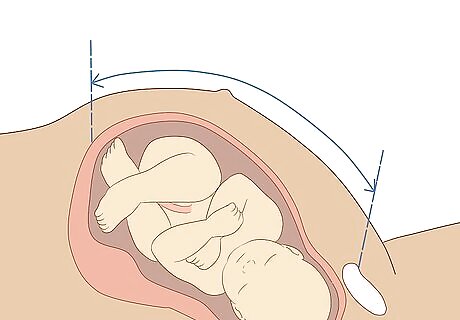
Allow the doctor to measure your fundal height. After the palpation, the doctor will hold a metric-based measurement tape at the top of the uterus (or fundus) and stretch it along the top of your pregnant uterus, measuring along the longitudinal axis. This means that the doctor will measure from the highest point of your uterus to the top of your symphysis pubis (the area located below your belly button where your pubic bone begins). The doctor will record your fundal height measurement in centimeters and enter it on your chart. As a very general rule, the fundal height should be within 1 to 3 centimeters of the baby's gestational age in weeks. For example, for a person who's been pregnant for 20 weeks, a fundal height of about 17-23 cm is expected.
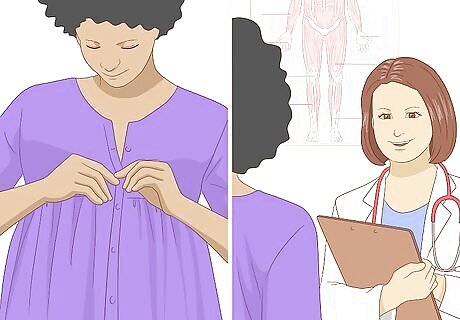
Get dressed and discuss your results with your doctor. After giving you a chance to dress, your doctor will come back and talk to you. At this point, if your fundal height measurement was abnormal, you'll probably discuss the possibility of additional tests.
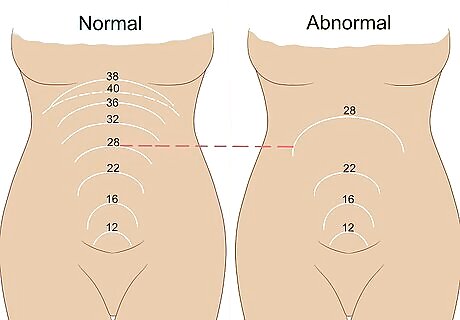
If your fundal height measurement is abnormal, schedule a follow-up. If your measurements do not fall within the normal parameters for your projected due date, this is not always a reason to worry. However, your doctor will probably want you to follow up with a sonogram in order to find out why your measurement was outside of the normal range of values. This can be for a variety of reasons - some completely harmless, others that are cause for concern (but by no means catastrophic). Below are many of the causes for an abnormal fundal height: Being especially tall and thin or short and heavy Having a full bladder Having twins, triplets, etc. Abnormally slow or rapid fetal growth Too little or too much amniotic fluid Uterine fibroids Having a child that has settled into breech or another unusual uterine position
Measuring Your Own Fundal Height

Empty your bladder and remove your clothing. It's not difficult at all to measure your fundal height on your own. To begin, empty your bladder and shed your clothing as you would in preparation for a fundal height measurement at the doctor's office. If you'd like, you may choose to put on a loose gown or similar garment (like an over-sized tee shirt) to simulate a hospital gown. Because most laypeople aren't medically trained in the procedure of measuring fundal heights and because, as noted above, an abnormal fundal height can have a wide variety of causes, it's important to remember not to make any medical decisions based on the results of a self-performed fundal height test. If you obtain an abnormal result, follow up with a trained doctor, nurse, or midwife for confirmation.

Grab a measuring tape. Soft, flexible sewing-style measuring tools work best, as they can conform to the curve of your stomach for a more accurate measurement. However, in a pinch, a ruler or even your fingers can work as a measuring tool. Typically, fundal heights are measured in centimeters, but if all you have are tools that measure in inches, use the conversion factor 1 inch = 2.54 cm.
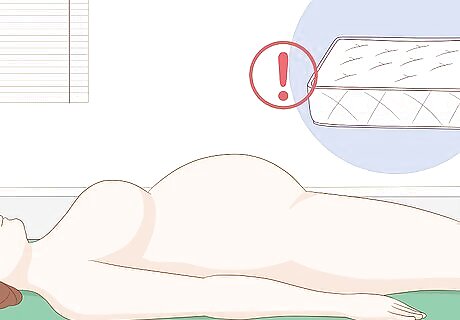
Lay on your back. Hard surfaces (like the floor) work best - soft surfaces (like some mattresses) can allow your posture to "sink" into the surface somewhat. If desired, feel free to place a pillow under your head.
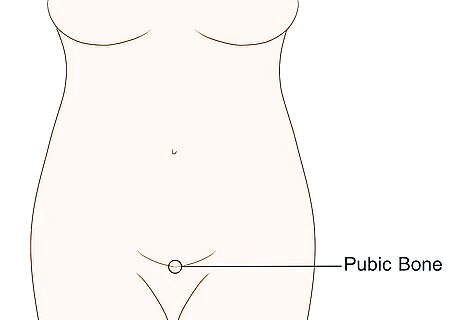
Find your pubic bone. The symphysis pubis (pubic bone) is a small, ridge-like bone on the front of the body just above the pubic area. Feel for the top of the pubic bone just below the bottom of your stomach - usually, this is near the top of where your pubic hair naturally extends. The pubic bone is often covered by a layer of subcutaneous fat which can make it somewhat tricky to find - you may need to press gently into your skin with your fingers to feel it.
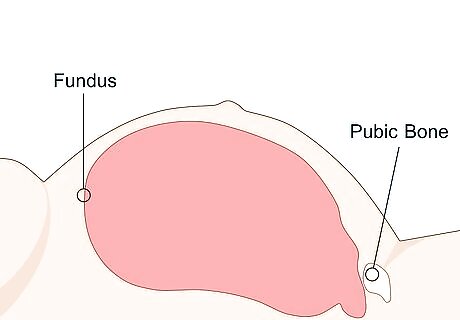
Find your fundus. Next, find your fundus (the "top" of your uterus) by feeling near your belly button. Relax your stomach muscles as you gently massage the area above and below your belly button. Feel for a vague "ridge" beneath the skin - this is your fundus. Generally, before the 20th week of pregnancy, the fundus will be below the belly button, while after the 20th week, it will be above it.
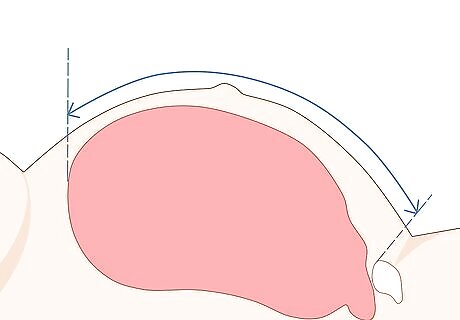
Measure from your pubic bone to your fundus. When you've found both your pubic bone and your fundus, it's time to measure. Hold the "0" end of your tape measure against the top of your pubic bone and carefully stretch it across your pubis, up and over the curve of your stomach, and to your fundus. Record this measurement (in cm). Generally, fundal heights should be within 1-4 cm of the baby's gestational age in weeks. For example, a 20 week-old pregnancy should have a fundal height of about 16-24 cm. If you don't have measuring tape or a ruler handy, use the old, traditional method of using your fingers. The width of one finger in the fundal height is roughly equivalent to one week of gestation time. Thus, for a 15 week-old pregnancy, you should expect roughly 15 finger-widths of fundal height.
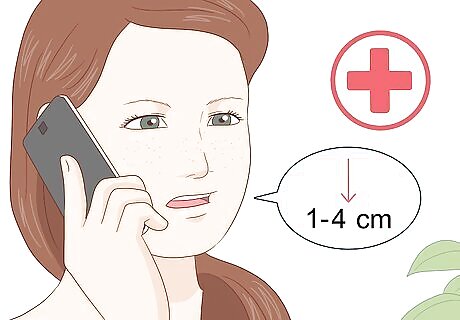
If your fundal height appears abnormal, contact your doctor. As noted above, there are many, many reasons why a woman's fundal height may not be within the expected 1-4 cm range of the baby's gestational age in weeks. Some of these reasons are harmless, while others are causes for mild concern. If you seem to be obtaining fundal height measurements that are outside of your expected range, contact a doctor for a definitive fundal height measurement and, if necessary, follow-up tests.



















Comments
0 comment